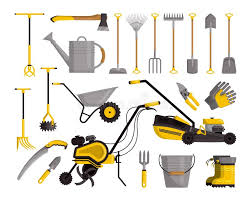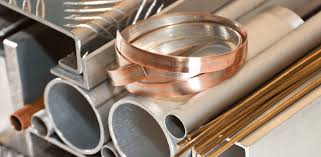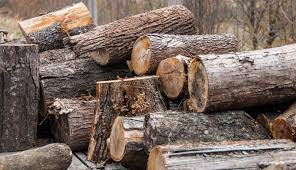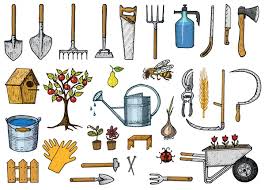The strength, durability, and service life of a workshop tool, farm implement, or machinery largely depend on the materials used in building them. The materials from which workshop tools, farm implements, and equipment are made can be grouped into two main categories: metals and non-metals. The metals are further divided into ferrous and non-ferrous materials.
Read Also: Wild Dog Description, their Personality and Care Guide
Metals

Metals may be used in various ways:
i. As pure metals.
ii. As substances containing non-metals, of which carbon is the most common.
iii. As substances containing two or more metals, known as alloys.
Metals are classified as ferrous when they are composed largely of iron, and non-ferrous when they do not contain iron.
Ferrous Metals
Ferrous metals include cast iron, wrought iron, and steel. These metals are all produced by reducing iron ore into pig iron, followed by treatments of the pig iron through various manufacturing processes.
The term “cast” refers to the process used to obtain the final form or shape of the metal. The hot molten metal is poured into a mold, allowed to cool, and harden into the shape dictated by the pattern of the mold.
This method is used to form many intricate and irregular-shaped parts of tools, farm implements, and machinery. The basic differences between iron and steel include the manufacturing processes, the amount of carbon, and impurities, which affect the physical properties.
1. Cast Iron: There are five general types of cast iron: gray, white, chilled, malleable, and ductile.
2. Wrought Iron: Wrought iron is almost pure iron. It is relatively weak and is not used much in the construction of tools and farm implements. However, pieces of wrought iron can be easily joined by heating them white hot and hammering them together, a process known as forge or fire welding. This makes it suitable for making chain links and ornamental gates and fences.
3. Mild Steel: Mild steel is a mixture of iron and about 0.5% carbon (1 part in 200). It is stronger than wrought iron. Mild steel can be formed into round or rectangular bars, angle iron, and steel metal by rolling it when red hot between suitably shaped rollers. Much of the framework and sheet metal work of farm machines is made of mild steel.
4. Carbon Steel: When the amount of carbon mixed with iron exceeds 0.5%, the material is called carbon steel. The carbon content varies slightly in different types of carbon steel, with steels containing up to 1% carbon being commonly used.
Carbon steel is stronger than mild steel and can be hardened and tempered (made softer and tougher) to give the material specific properties. Carbon steel, sometimes simply called steel, is used for the framework of cultivation machinery, hoe blades, disc coulters on ploughs, and other parts where strength is essential.
v. Steel Alloys: A steel alloy is a mixture of steel and small amounts of one or more alloy metals. Common alloying elements in steel include boron, manganese, nickel, vanadium, tungsten, and chromium.
Non-Ferrous Metals

1. Aluminium: Aluminium is used either in pure form as sheet aluminium or mixed with silicon to make castings. The aluminium sheet is weather-resistant, and some grain storage bins are made of this material.
Aluminium-silicon alloys are easy to cast and are used for tractor engine pistons and parts like injection pump casings. Some tractor sumps are also made of aluminium-silicon alloys.
2. Brass: Brass is an alloy of copper and zinc. It is a good bearing material and is often used for brass bushes found on nearly all farm implements. Water pump parts are also sometimes made of brass due to its resistance to rusting.
3. Bronze: Bronze is an alloy of copper and tin and, like brass, is a good bearing material. Sometimes phosphorus is added to improve its properties, and the substance is then called phosphor bronze.
4. Copper: Copper is generally used alloyed with zinc or tin to create brass or bronze, though copper water pipes are often found in farm buildings. Due to its excellent conductivity for heat and electricity, copper is also used for tractor radiators and windings in electrical apparatus like starters and dynamos.
5. Lead: Lead is used for making plates in tractor batteries. Some water pipes are also made of lead, although iron or copper pipes are now more commonly used. Lead is alloyed with tin to make solder, which is used in the construction and repair of electrical apparatus and plumbing installations.
6. Tin: Tin, which is no longer used in its pure state due to its high cost, is a component of solder.
7. Zinc: Zinc is used as a coating for mild steel plates, commonly known as galvanized iron. Clean steel plates are dipped in molten zinc, which coats the surfaces, providing resistance to weather corrosion. These galvanized sheets are used for roofing farm buildings and making buckets, feeding troughs, and other farm equipment.
Read Also: All You Need to Know About the Painted African Dog
Non-Metals

1. Wood: Various types of wood are used in constructing farm tools, implements, and equipment. Four common types of home-grown timber and their uses include:
2. Ash: A light, strong, resilient wood, suitable for fork and hoe handles.
3. Elm: A heavy, tough wood, durable in water, often used for trailer bottoms.
4. Larch: A light, resinous softwood with some resistance to decay, used for fencing stakes and parts of livestock huts.
5. Oak: A heavy, hardwood used for gate posts and areas where strength is critical. The high cost of painting prevents its wide use for protecting farm woodwork.
Lead-based paints should never be used on equipment for livestock, as they tend to lick it, and the intake of even a small amount of lead paint can cause death. Manufacturers provide various types of paint that are safe for use on woodwork that comes into contact with livestock.
6. Rubber: Rubber is used for making tractor tires, driving belts (especially V-type), and hose pipes. While resistant to damp, rubber perishes in strong sunlight and can be damaged by fuel and lubricating oils. Rubber tires can become permanently deformed if left standing for a long time with low pressure.
To maximize tire life, the correct pressure should be maintained, and if the vehicle or implement is stored for a long period, it should be jacked up and left standing on blocks with the tires covered. Any fuel or oil spilled on rubber should be wiped off immediately.
7. Plastics: Polythene plastics are commonly used on farms for hose pipes, buckets, and water installation parts like ball valve floats. These plastics resist cold water but soften and distort when exposed to hot water.
Fibreglass, made of glass fibers bonded by adhesives, is often used for belt and chain guards. Though weather-resistant, fibreglass may crack if bolts are not kept tight. Damaged fibreglass can be easily repaired by building up broken areas with new glass fibers and adhesives, with full instructions provided in repair kits.
In this article, an attempt has been made to understand the types of materials used in constructing tools and equipment found in agricultural workshops. Additionally, the types of materials used for construction were also discussed.
Do you have any questions, suggestions, or contributions? If so, please feel free to use the comment box below to share your thoughts. We also encourage you to kindly share this information with others who might benefit from it. Since we can’t reach everyone at once, we truly appreciate your help in spreading the word. Thank you so much for your support and for sharing!

